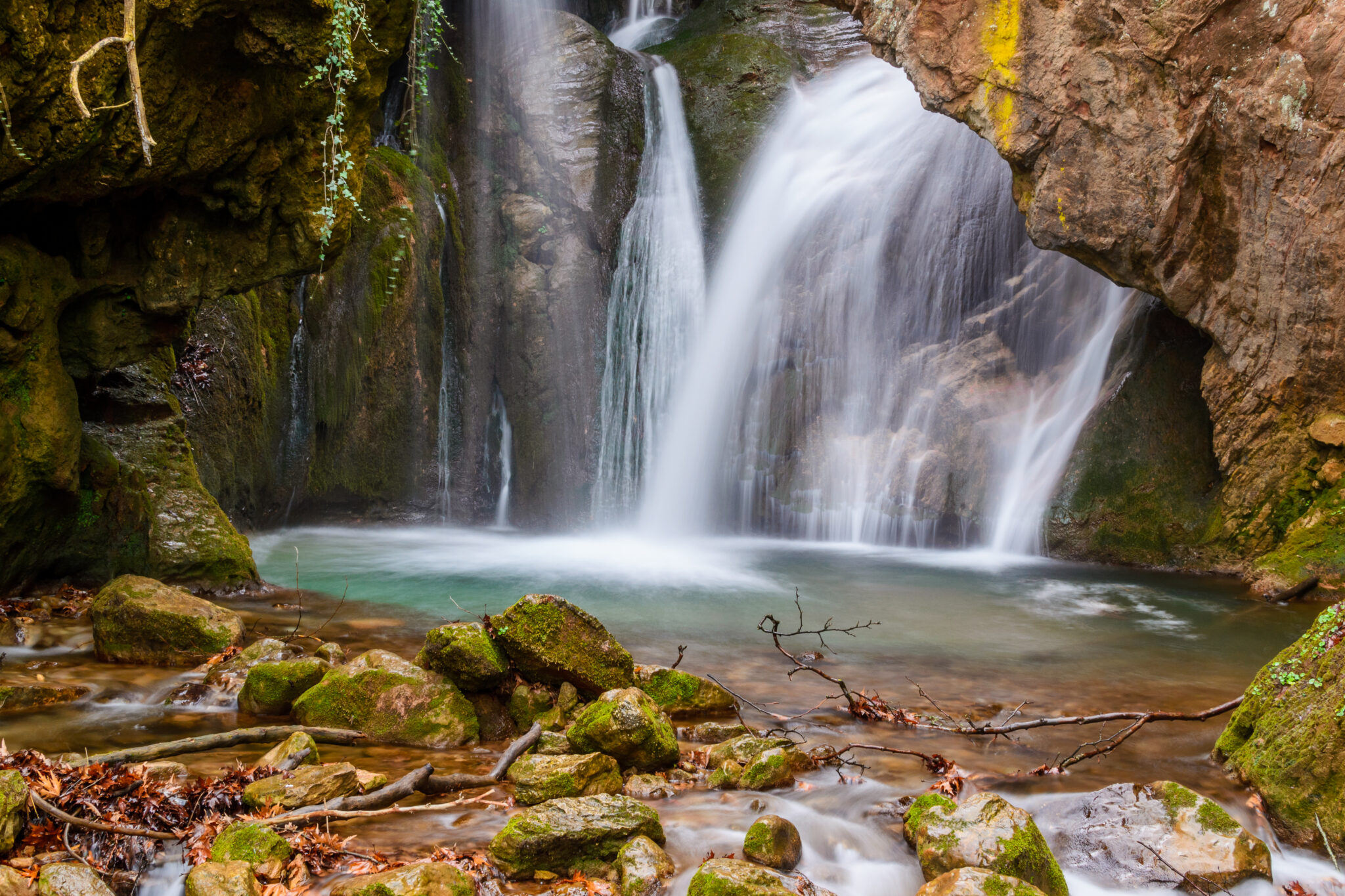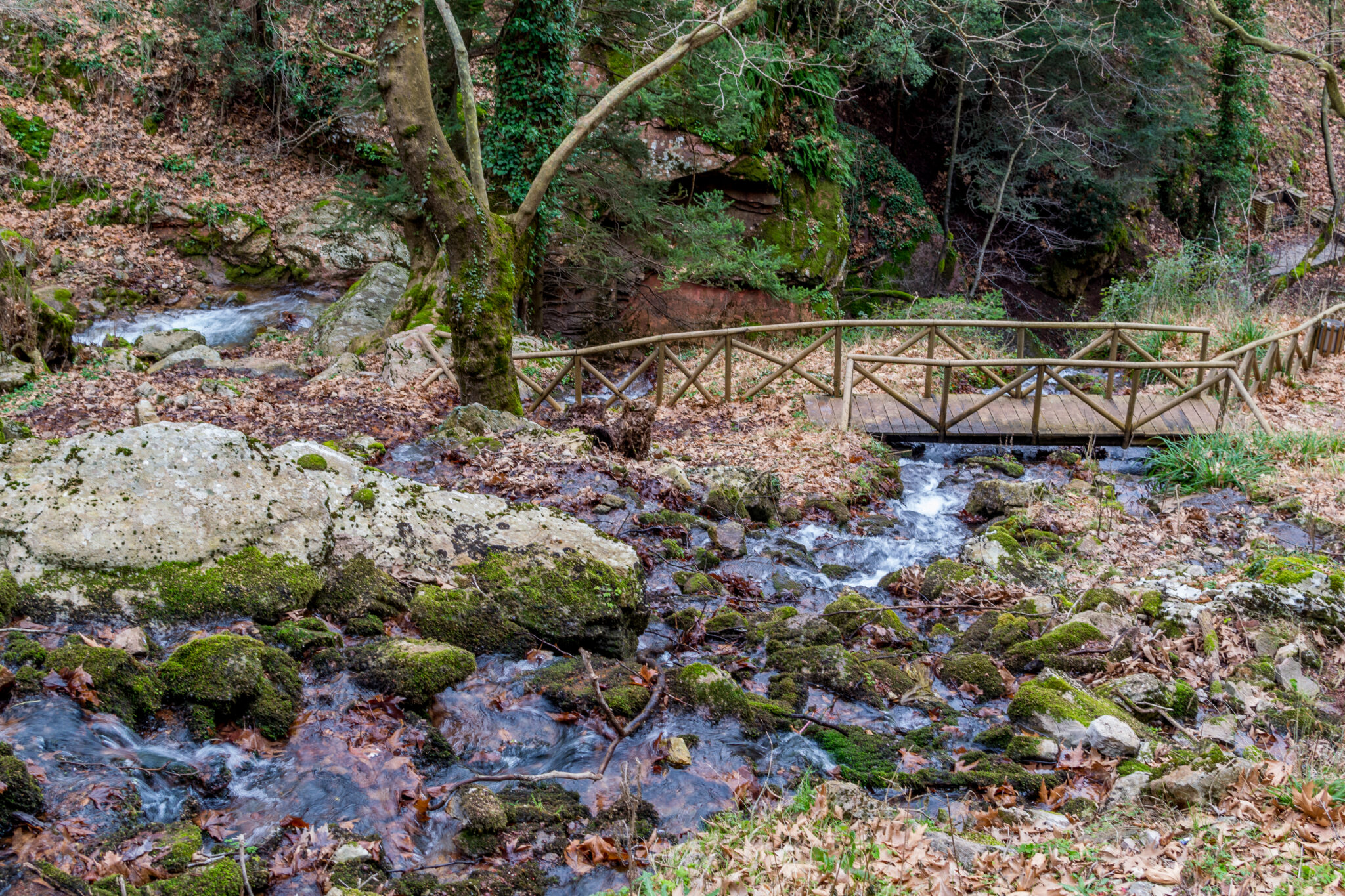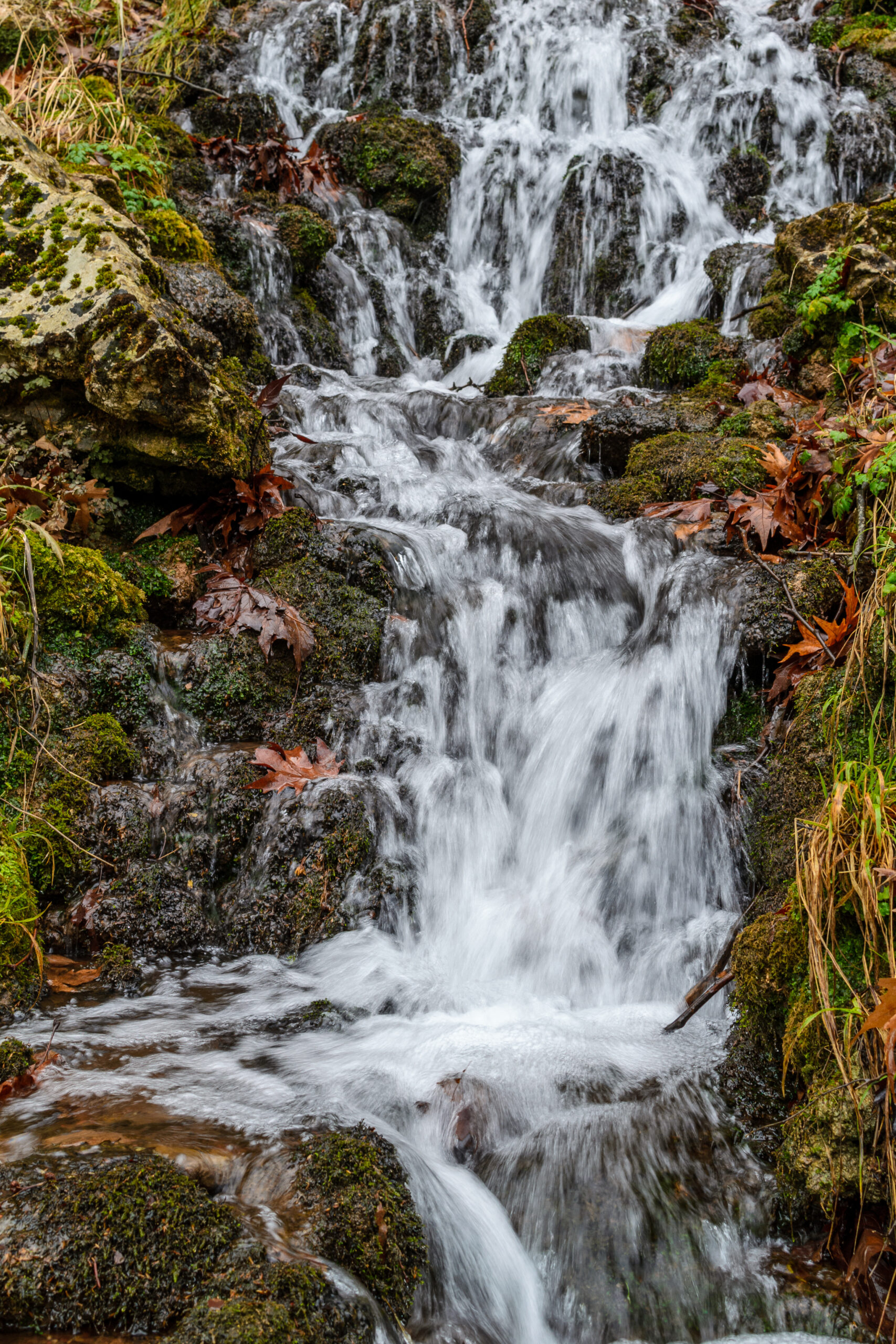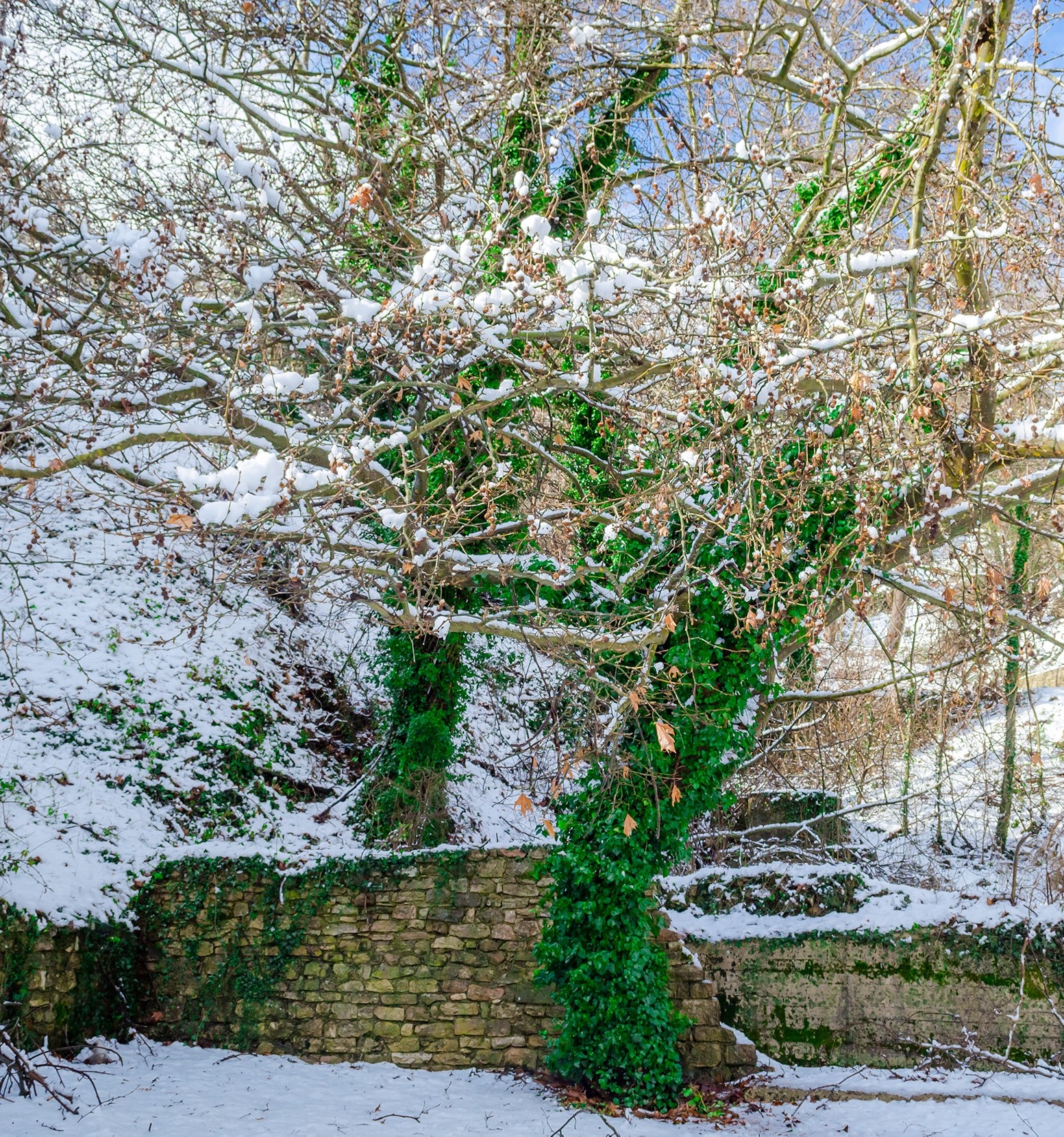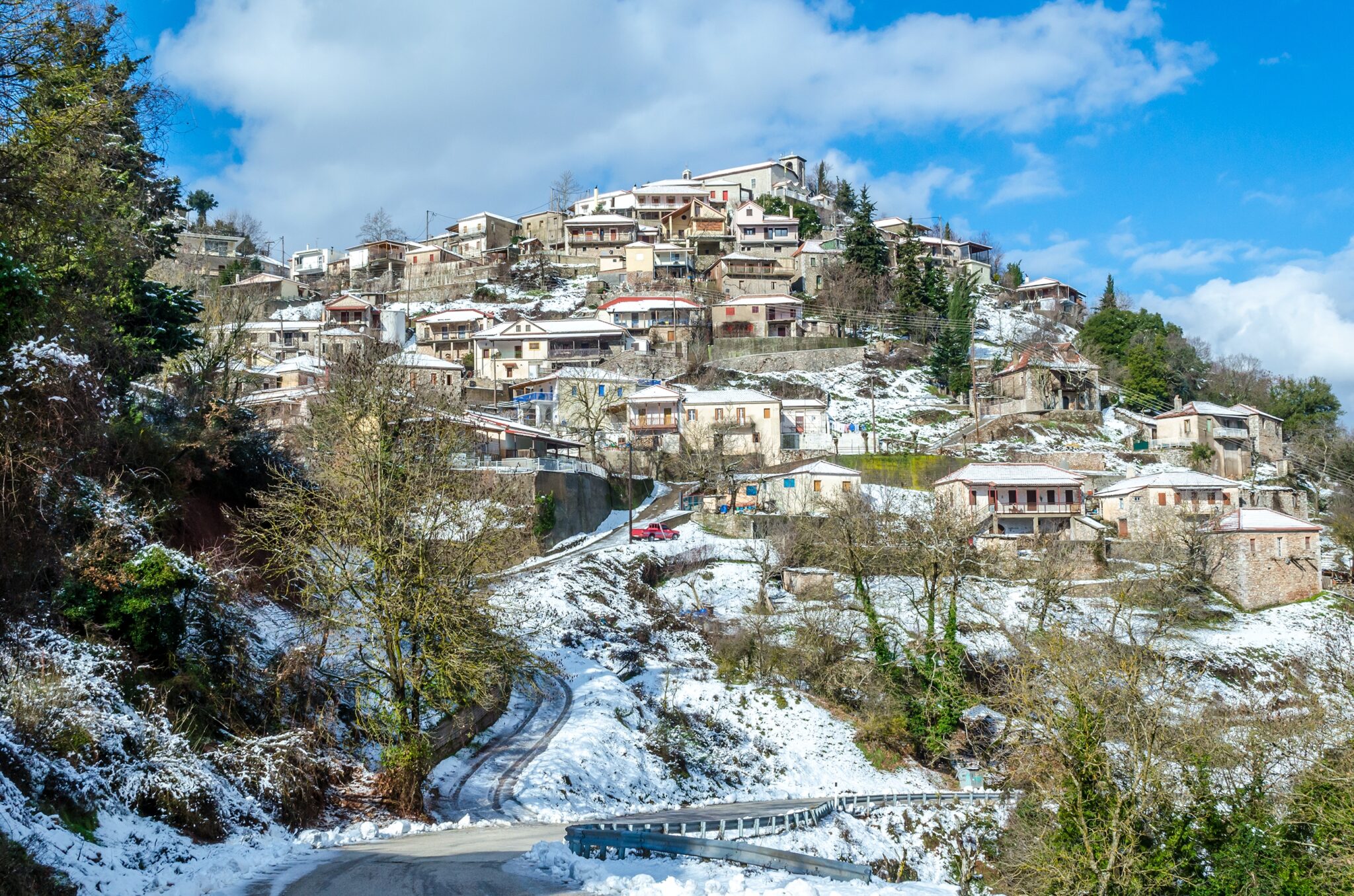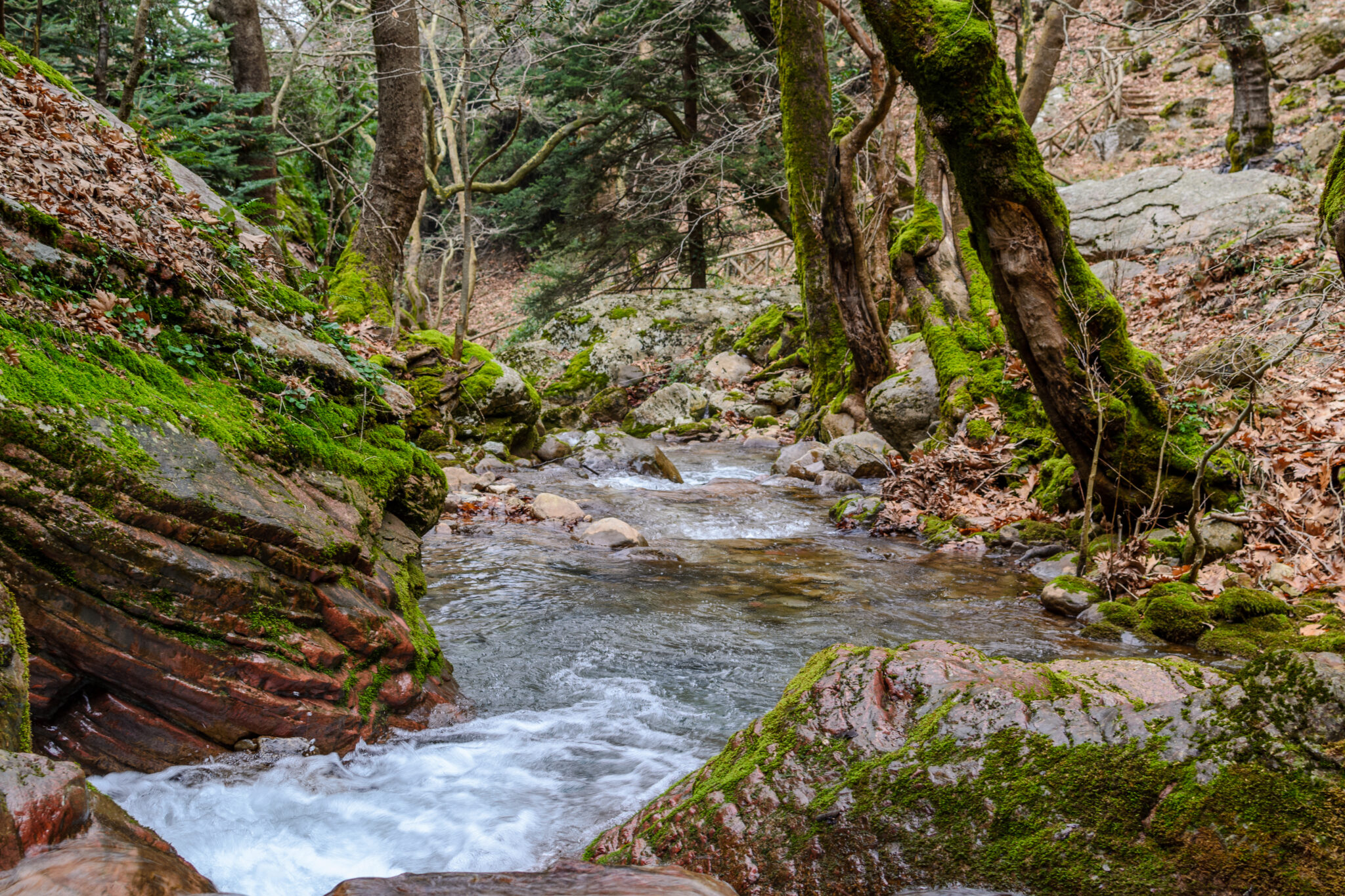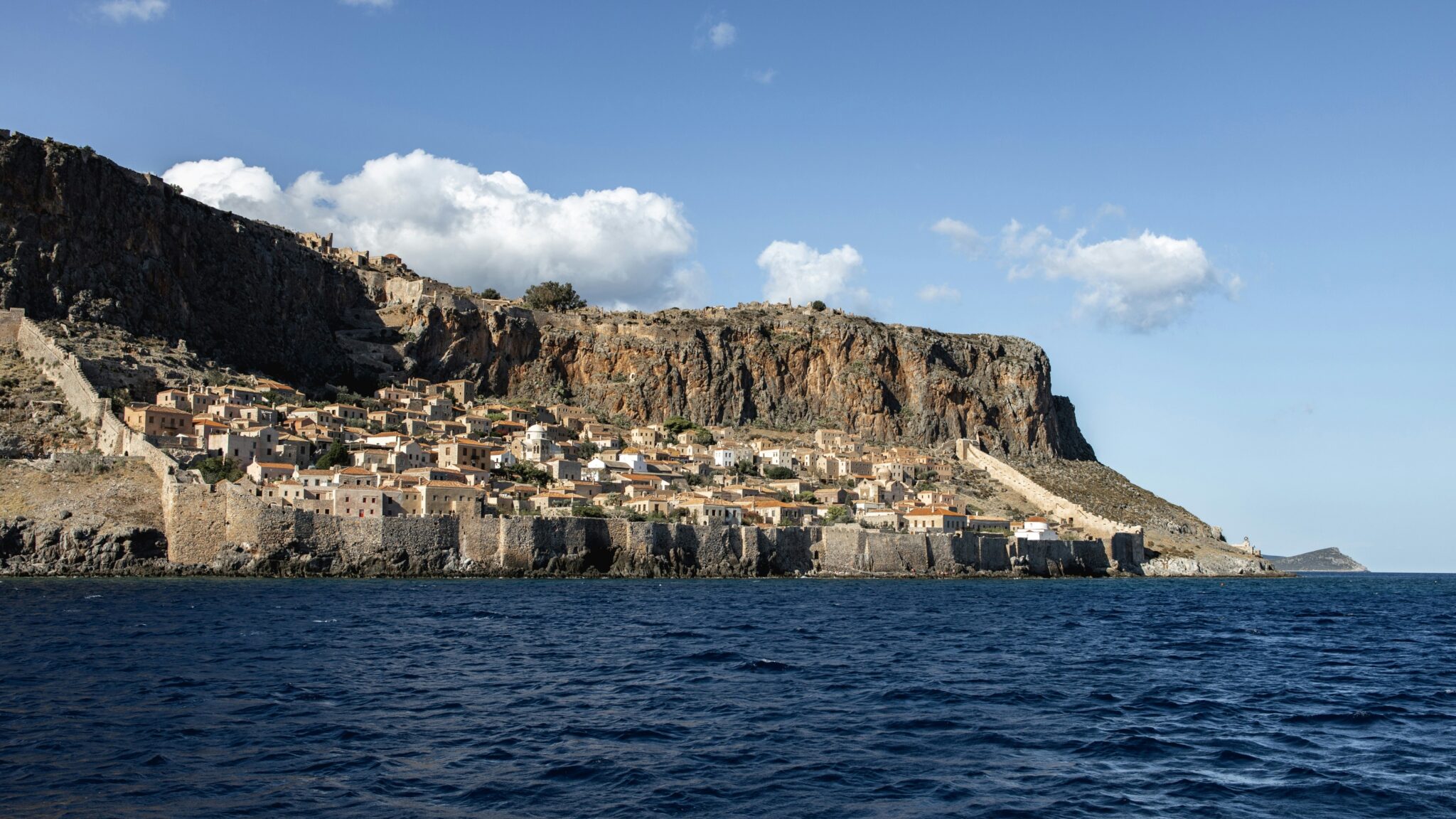Kalavryta and its surrounding areas have long been among the most popular mountain destinations, mostly owing to the Chelmos ski resort and stunning natural surroundings and attractions such as the Cave of Lakes. Additionally, its quality tourist infrastructure and its proximity to the plain play a part.
Kalavryta is just two and a half hours from Athens, yet even in such a well-known location, there are areas that remain relatively undiscovered. One such place is the village of Ano (upper) Vlasia, which nature has gifted with a monument of aquatic beauty.
Just outside the village lie the twin waterfalls of St Taxiarchis, one of those places that once visited, isn’t easily forgotten. Where the waters meet, they rush into a lake before rejoining the Selinounta river, where a small stream flows beneath a wooden bridge.
Beyond lies a dark cave, while the backdrop is completed by plane trees and aquatic vegetation, including climbing plants and other flora. The most curious visitors who’ve ventured into the cave speak of underground lakes and unique sights. For your safety, we advise staying within the designated areas and enjoying the view from there. Particularly in spring, when the mountain snow has melted and the water levels rise, the interplay of light, sights, and sounds from the water, frogs and birds, conjures a unique ambience.
The waterfalls are part of the Selinounta River system. This river originates from Erymanthos, not far from where the waterfalls are located, draining into the Corinthian Gulf near the coastal settlement of Valimitika. It’s a turbulent river, known in times past for causing floods in the Aigialeian plain.
The Village
Sprawled amphitheatrically at an altitude of over 800 metres on a steep slope, where Mt Erymanthos meets the Kallifonio mountain range, Ano Vlasia is genuinely a gem of mountainous Achaia.
Despite some modern alterations, most village homes retain their rugged stone-built heritage and traditional tile roofs, many of which are the handiwork of craftsmen from Lagadia in Arcadia and Epirus. Some of the older structures even bear the distinct signatures of their creators, embossed into them.
However, as elegant as these man-made marvels are, it’s the village’s location that truly steals the show. From every balcony and vantage point in Ano Vlasia, one can take in breathtaking views of the peaks of Olonos, Lepida and Mouggilas. Especially in the morning, just as dawn breaks, the vista is nothing short of mesmerising, accompanied by crisp, fresh air. It’s worth noting that Ano Vlasia was once a destination for “medical tourism”, its salubrious climate making it an ideal refuge for those with tuberculosis.
In the village, you’ll find coffee houses and tavernas, and the main event of the year is the feast of Saint Vlasios on the 11th of February. During the winter months, it’s not uncommon for the village to be blanketed in snow.
Surrounding Ano Vlasia are the natural beauties of Erymanthos, with its sparkling fresh waters and dense forests of fir, oak, and other trees. The local fauna includes wild boars, hares, and a plethora of bird species.
It’s worth visiting the single-arched Liaskou bridge over the Selinounta River and taking in the view from the historic Monastery of Saint Nicholas, located on one of Erymanthos’s ridges at an altitude of over 1000 metres. Additionally, the National Trail 31, which starts in Patras and ends in Ancient Olympia, passes through Ano Vlasia.
Getting to the Waterfalls
Starting from Kalavryta, take the Provincial Road of Patras-Kalavryta towards Metochi. After passing Ano Vlasia, follow the tarmacked road south of the village towards the forest and turn right onto the dirt track (suitable for regular cars), leading to the waterfalls. From there, a descent of around 100 steps will take you to the waterfalls themselves.
Ano Vlasia is about 27 kilometres from Kalavryta and roughly 47 kilometres from Patras. The waterfalls are a 2–3-kilometre journey from the village.
Read also:
The Vital Ecological Importance of Tenagi of Philippi



